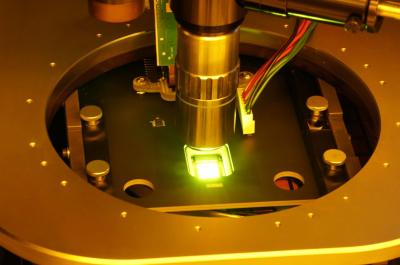The Fraunhofer IMPS announced that it has developed an exceptionally bright OLED microdisplay, using a novel stack architecture. The new 0.62" SXGA monochrome (green) microdisplay achieves a brightness of 70,000 nits, and on reference substrates it has even achieved over 200,000 nits.
The new architecture uses a 3-stack architecture, which means that three complete OLED device stacks are placed on top of the other. This achieves high brightness, and also reduces the current density for a given brightness compared to a single stack device - and so enhances the lifetime of the device.
The researchers say that such displays could be promising for AR applications that demand very high brightness, as there's a lot of light loss in the waveguide component of the system. Many believe that only microLED displays can achieve high enough brightness, but OLED developers aim to increase brightness using novel technologies. There's still development work needed on these displays - to reduce optical cross talk, improve the material stack and design new novel backplane architectures to support such high brightness displays.
A few months ago researchers from the Fraunhofer IPMS announced that they have developed semi-transparent yellow high resolution OLED microdisplays.


